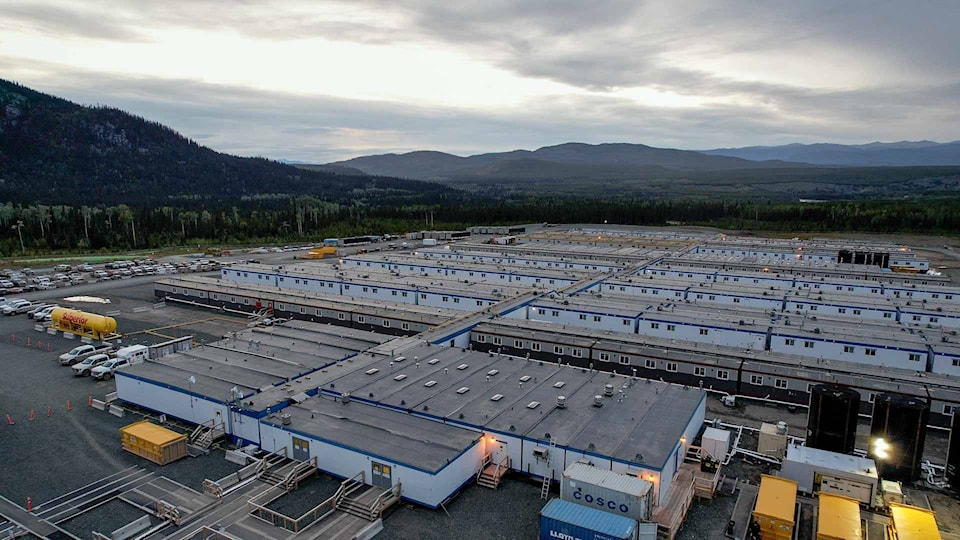Coastal GasLink (CGL) says it needs to beef up its workforce to more than 1,200 people at a camp south of Houston to finish its 670-kilometre long natural gas pipeline from northeastern B.C. to the LNG Canada liquefied natural gas plant at Kitimat on time.
In an application filed with the Regional District of Bulkley Nechako for a permit to expand the number of beds available at its Huckleberry camp site, CGL says COVID-related public health orders reduced the number of people it could house, a factor that reduced construction progress.
And south of Houston, the company added, “significant blockade actions in September through November 21, including an attack at the Morice River drill pad site in February 2022” contributed to delays.
“As such, the project has had to adapt and bring on additional crews specific to this area to fulfill the mechanical completion date,” the application to the regional district indicates.
The pipeline is divided into eight construction sections and of those eight, Section 7, which runs 77 kilometers south of Houston toward Kitimat, is the only one to not yet have any pipeline installed.
CGL also replaced its original pipeline contractor on Section 7 with another company.
The temporary use permit needed by CGL would replace an original one granted by the regional district in 2019 for an 800-person camp by allowing accommodation for 985 people.
That camp is within the regional district’s zoning authority so that a permit is required but another camp adjacent to the main one is outside the jurisdiction of the regional district. It contains accommodations for up to 244 people so that the total workforce now required comes to 1,229 people.
Although the company is limited to 800 people for the time being under the existing temporary use permit, it did provide the regional district with a workforce ramp up schedule in August beginning with 800 people as of Aug. 1. That schedule had the number increasing to 900 by Aug. 7, 1,000 by Aug. 21, 1,100 by Sept. 1 and concluding with 1,229 people by Sept. 15.
As of approximately two weeks ago, CGL had approximately 1,000 people at the Huckleberry location divided between the main camp and the smaller one that’s outside the regional district’s jurisdiction.
CGL’s permit request is to come before the regional district for consideration on Sept. 22.
Those wishing to comment upon the request can view the permit application at the Burns Lake regional district office or the District of Houston office and have until Sept. 20 to make a written submission.
CGL did ask First Nations in the immediate area of its pipeline route for their opinion and all four — the Skin Tyee First Nation, the Nee-Tahi-Buhn Band, the Office of the Wet’suwet’en and the Wet’suwet’en First Nation — have responded by saying they have no concerns about the wanted camp population increase.
The District of Houston council considered the matter at its Sept. 6 and also gave its approval “subject to the application following proper processes as determined by the Regional District of Bulkley-Nechako.”
The District of Houston already sells water to the Huckleberry location and with the projected population increase, seven trips to and from the community will be needed daily to provide 150,000 litres of water.
At the same time, the camp provider pays Houston to accept effluent, a quantity that is about 150,000 litres a day from seven trips.
Adding to the camp population will also increase traffic with an estimate of 350 vehicles leaving and entering the camp daily from Monday to Saturday.
A temporary use permit of the kind wanted by CGL can only be granted for three years.
The company says it expects construction activity to continue into 2023 with the camp still needed after that until the Huckleberry site is cleaned up and the area reclaimed with trees and vegetation.
